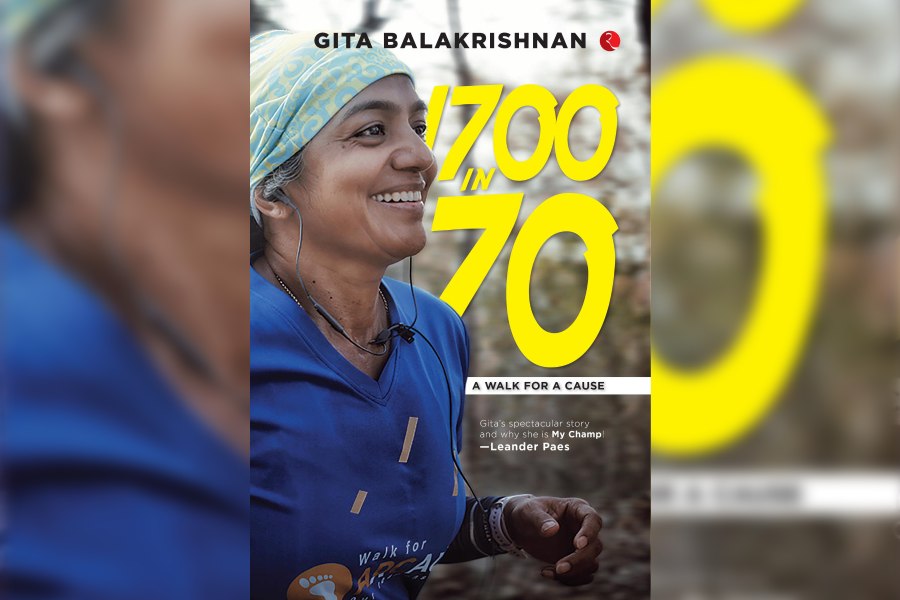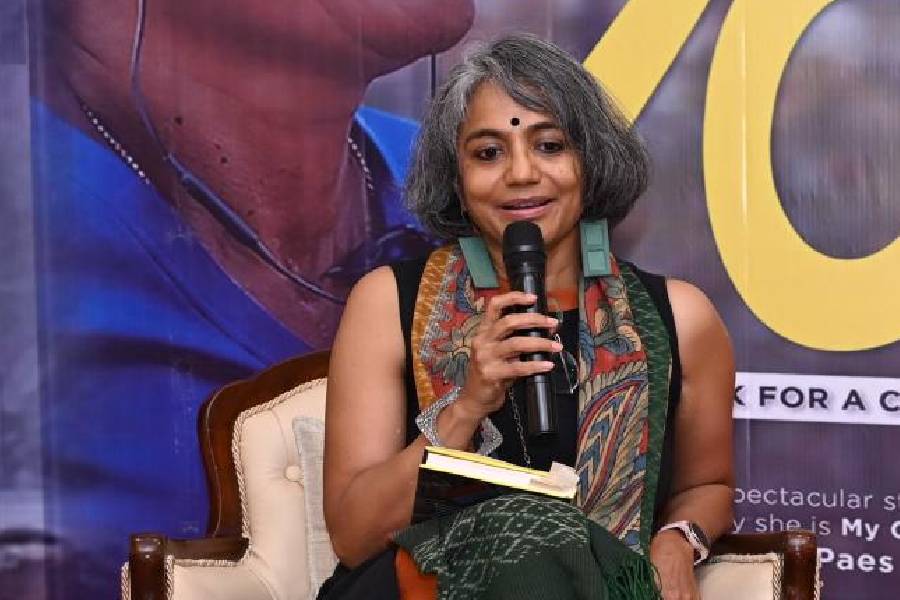Gita Balakrishnan’s story is unmistakably about courage, determination, and perseverance. By embarking on a 1,700km walk from Calcutta to Delhi, she pushed her limit and explored the real India, touching hundreds of lives. She defied age and physical restrictions and emerged as an example for many. An architect by profession, Balakrishnan’s mission was also about initiating a dialogue on design literacy. She documents her journey including her trials and triumphs in her book 1700 in 70: A Walk for a Cause that was launched at a few venues in Calcutta including The Bengal Club and The Calcutta Club. A tete-a-tete with the highly spirited Balakrishnan on what walking means to her, her upcoming expeditions and more.
Q. The ‘why’, ‘when’ and ‘how’ of your journey is already in the book Tell us about the idea of sharing what you felt with everyone through a book. When did you decide to pen it down in the format of a book?
When I started the walk, the book was on my mind. As I constantly shared my experiences of this rich and revealing journey via social media posts and understood the interest it generated, the need for a book was established. There were so many questions to be answered, so many stories to be told. The walk was to soak in the “then and the there” and hence writing had to wait till I returned.

Q. While the activity of walking is so ordinary and non-novel for the population at large, for you it has a different meaning. Tell us about re-discovering walking.
I had taken to running at the age of 45 and I embarked on this epic walk at the age of 53. Walking meant slowing down, which wasn’t easy. When I run, my grey hair draws respect from passersby, but a walk is a leveller. In the Chapter, From a Woman in a Hurry to a Woman in No Hurry, I write about how walking, for me, means taking time to imbibe what I see, meet people, sit, pause and reflect. I’ve come to realise that walking in this manner is certainly novel. A lot of detail evades us as we brush past our streetscapes cocooned in our vehicles.
Q. Walking 1,700km in your early 50s is not an easy task, both mentally and physically. What do you think kept on driving you to complete your journey and not give up?
My motivation, the magic of the idea complemented by my family’s and team’s support were enough to get me started. Once I set out, the people and my explorations and discoveries every day made me thirsty for more. There were hardships and setbacks but I was far too invested in the challenge not to enjoy every moment. After the initial days, my new schedule became the new normal — get up early, get ready, pack, stretch and push. The fact that I have already completed four such journeys is testimony to the fact that all these driving forces help me in going on without giving up.
Q. Usually, if athletes try something like this, they train themselves for days for it. Before starting the walk did you engage in any training or special diet?
I started my journey on February 13 2022 from Calcutta and culminated it on April 24 of the same year in Delhi. I was running regularly three days a week until November 13 2022, when I switched to walking. I began training by walking for two hours a day, moving on to three and then four. I did a mock trial of three days of 30km each, walking the week before I started. I consulted a sports doctor to ensure I was fit to undertake this journey and also learnt from ultra-marathon runners how to beat the heat, consulted a nutritionist to ensure the body is nourished and also had the advice from a fitness trainer on stretching and exercises.But then, how does one even prepare for a journey like this? You evolve ways of dealing with the agonies and the ecstasies while you are on it.
Q. You have seen part of India in a very different light, experiencing the linguistic, cultural and culinary diversity. And you also walked for a cause. Tell us about moving ahead with this goal and did you add new goals as you walked?
The first walk was crafted around the core agenda of the power of design and the social responsibility of designers. The first walk helped me identify six action areas that the efforts of Ethos Foundation now focus on. They are ShramA, Empowering the Hands that Build; UDita, Universal Design is the Answer — Inclusive Design; BODH, Building on Design Histories — Traditional Wisdom; Acedge, Design Literacy; ADaR, Affordable Design a Right — Making Design Accessible; and Saath, Sustainability in Thought and Action. We have many exciting ideas that are being worked upon in each of these action areas.











